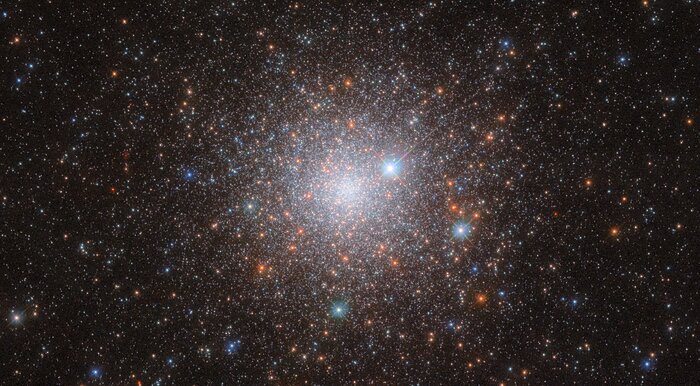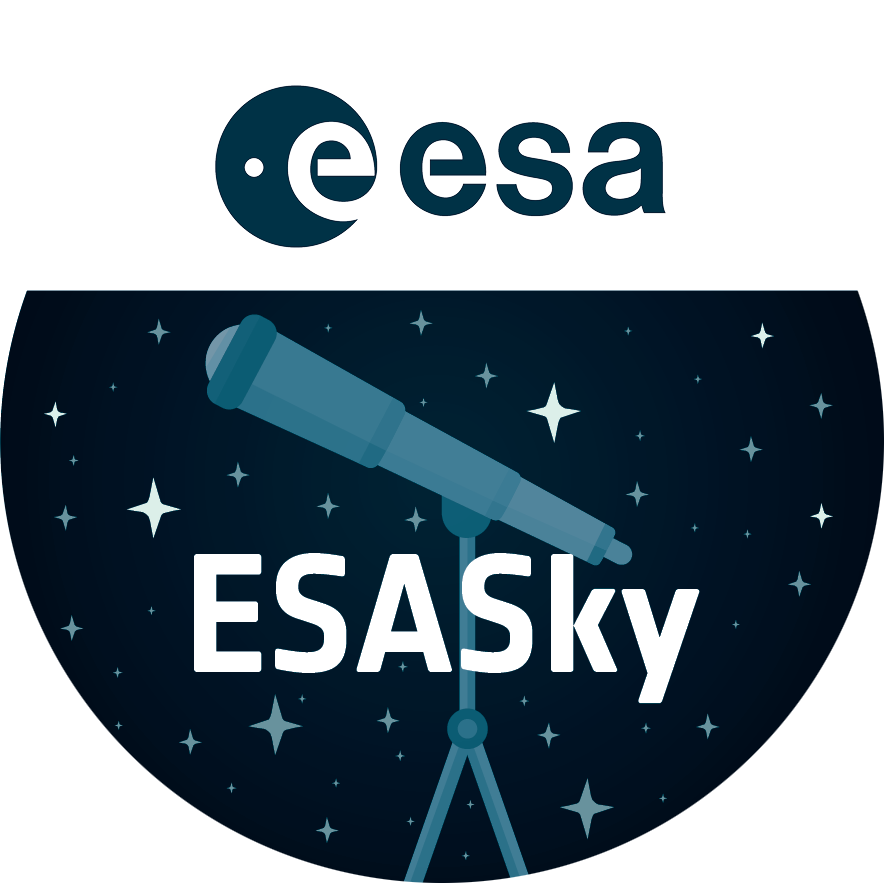Digging up a galactic time capsule
For this ESA/Hubble Picture of the Week, we gaze upon the field of stars that is NGC 1786. This object is a globular cluster in the Large Magellanic Cloud (LMC), a small satellite galaxy of the Milky Way Galaxy that is approximately 160 000 light-years away from Earth. NGC 1786 itself is in the constellation Dorado. It was discovered in the year 1835 by John Herschel.
The data for this image comes from an observing programme comparing old globular clusters in nearby dwarf galaxies — the LMC, the Small Magellanic Cloud and the Fornax dwarf spheroidal galaxy — to the globular clusters in the Milky Way galaxy. Our galaxy contains over 150 of these old, spherical collections of tightly-bound stars, which have been studied in depth — especially with Hubble Space Telescope images like this one, which show them in previously-unattainable detail. Being very stable and long-lived, they act as galactic time capsules, preserving stars from the earliest stages of a galaxy’s formation.
Astronomers once thought that the stars in a globular cluster all formed together at about the same time, but study of the old globular clusters in our galaxy has uncovered multiple populations of stars with different ages. In order to use globular clusters as historical markers, we must understand how they form and where these stars of varying ages come from. This observing programme examined old globular clusters like NGC 1786 in these external galaxies to see if they, too, contain multiple populations of stars. This research can tell us more not only about how the LMC was originally formed, but the Milky Way Galaxy, too.
[Image Description: A cluster of stars in space. It’s bright in the centre, where the stars are densely packed together in the cluster’s core, and grows dimmer and more diffuse out to the edges, as the stars give way to the dark background of space. A few orange stars are spread across the cluster, but most are pale, bluish-white points of light. Three large stars with cross-shaped spikes around them lie between us and the cluster.]
Links
Credit:ESA/Hubble & NASA, M. Monelli
Acknowledgement: M. H. Özsaraç
About the Image
| Id: | potw2528a |
|---|---|
| Type: | Observation |
| Release date: | 14 July 2025, 06:00 |
| Size: | 3421 x 1885 px |
About the Object
| Distance: | 160000 light years |
|---|---|
| Constellation: | Dorado |
| Category: | Stars |
Classic Wallpapers
Coordinates
| Position (RA): | 4 59 7.69 |
|---|---|
| Position (Dec): | -67° 44' 44.60" |
| Field of view: | 2.26 x 1.24 arcminutes |
| Orientation: | North is 54.3° right of vertical |
Colours & filters
| Band | Wavelength | Telescope |
|---|---|---|
| Optical U | 336 nm |
Hubble Space Telescope
WFC3 |
| Optical B | 438 nm |
Hubble Space Telescope
WFC3 |
| Optical I | 814 nm |
Hubble Space Telescope
WFC3 |


